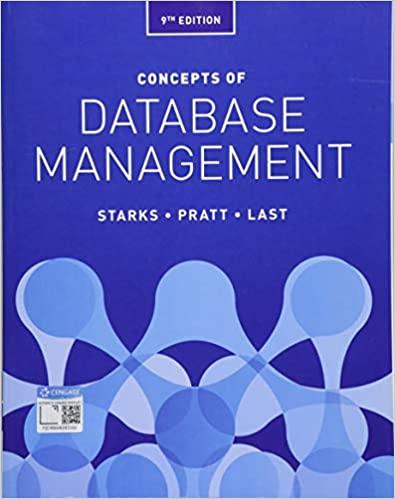Answered step by step
Verified Expert Solution
Question
1 Approved Answer
Q 1 . Explain the concept of a process in an operating system, including its states and transitions. Describe the various process states, including additional
Q Explain the concept of a process in an operating system, including its states and transitions. Describe the various process states, including additional states that some operating systems may have, and the transitions between them.
Q What is a process control block PCB and how is it used by operating systems to manage processes? Provide a detailed explanation of the structure and contents of a typical PCB and discuss how PCBs are organized and managed by the operating system, including different methods for allocating and deallocating PCBs and organizing them in lists.
Q How do userlevel threads differ from kernellevel threads, and what are the advantages and disadvantages of each approach? Additionally, how can a combined approach of both ULTs and KLTs be used to optimize the performance and concurrency of an application?
Q What is multicore programming? What are the programming challenges in multicore systems? What is Amdahl's law, and what are the types of parallelism?
Q What is the impact of scheduling algorithms FIFO SJF and SRT on the performance and fairness of batch processing? How can the total CPU time of processes be estimated for effective scheduling?
Q Explain the tier approach with floating priorities, including the different scheduling algorithms used for realtime, interactive, and batch processes.
Q What are the different criteria used for comparing CPUscheduling algorithms, and how do they affect the choice of a particular algorithm in a given situation? Discuss the importance of maximizing CPU utilization and throughput while minimizing turnaround time, waiting time, and response time, and explain how these measures are optimized in most cases.
Q Discuss the critical section problem and its solution. Give an example of a scenario where concurrent processes may access a common data area and explain how the solution to the critical section problem can be applied to ensure mutual exclusion, prevent lockout, starvation, and deadlock.
Q Explain the implementation of semaphores and their significance in process synchronization. Discuss the difference between binary semaphores and general semaphores. Also, describe the implementation of P and V operations on general semaphores and explain how blocking and unblocking of processes take place in the waiting list associated with a semaphore.
Q Discuss various methods of handling deadlocks in operating systems, including prevention, avoidance, and detection. Provide advantages and disadvantages of each method and situations in which each method is appropriate.
Step by Step Solution
There are 3 Steps involved in it
Step: 1

Get Instant Access to Expert-Tailored Solutions
See step-by-step solutions with expert insights and AI powered tools for academic success
Step: 2

Step: 3

Ace Your Homework with AI
Get the answers you need in no time with our AI-driven, step-by-step assistance
Get Started


